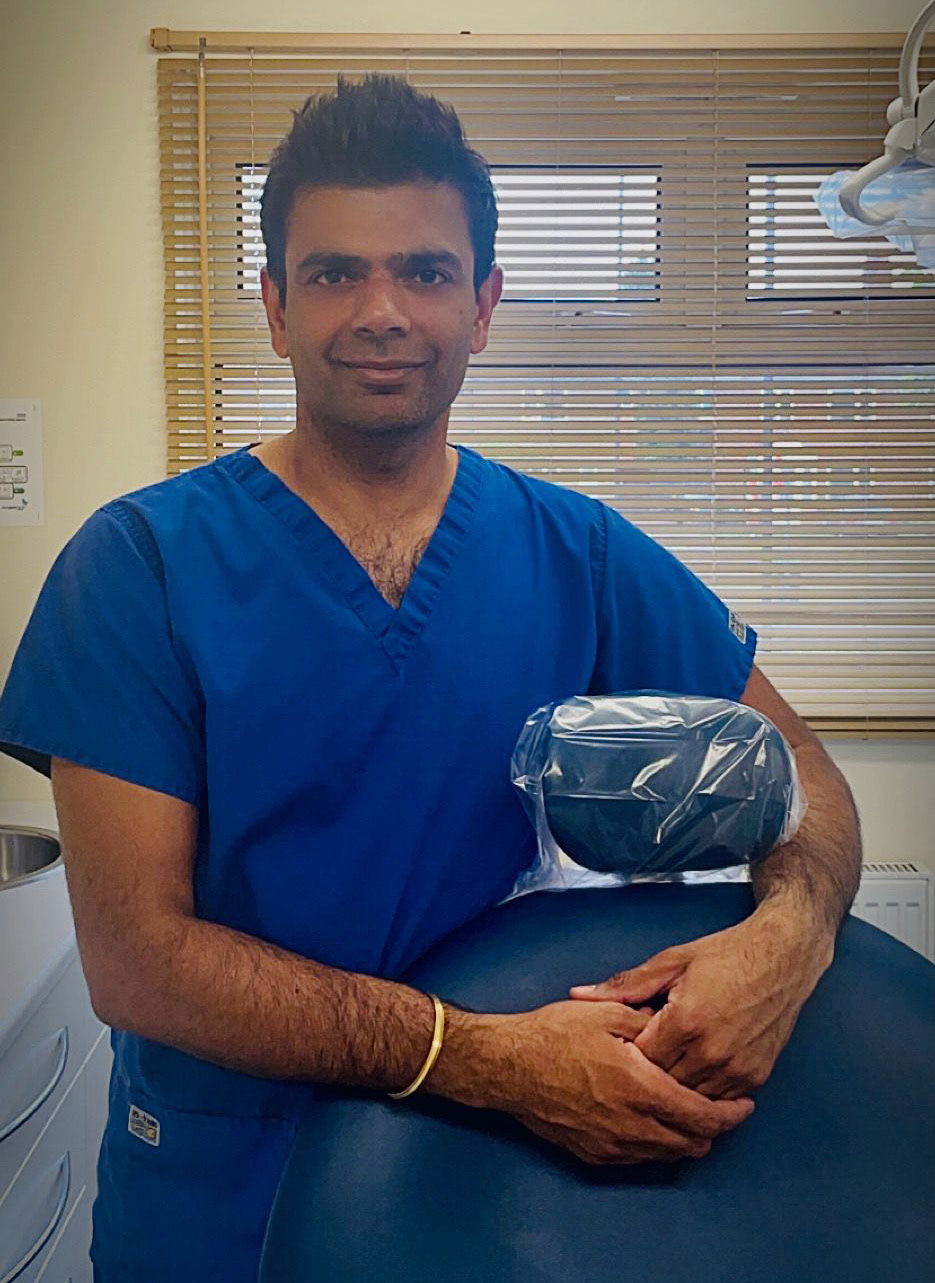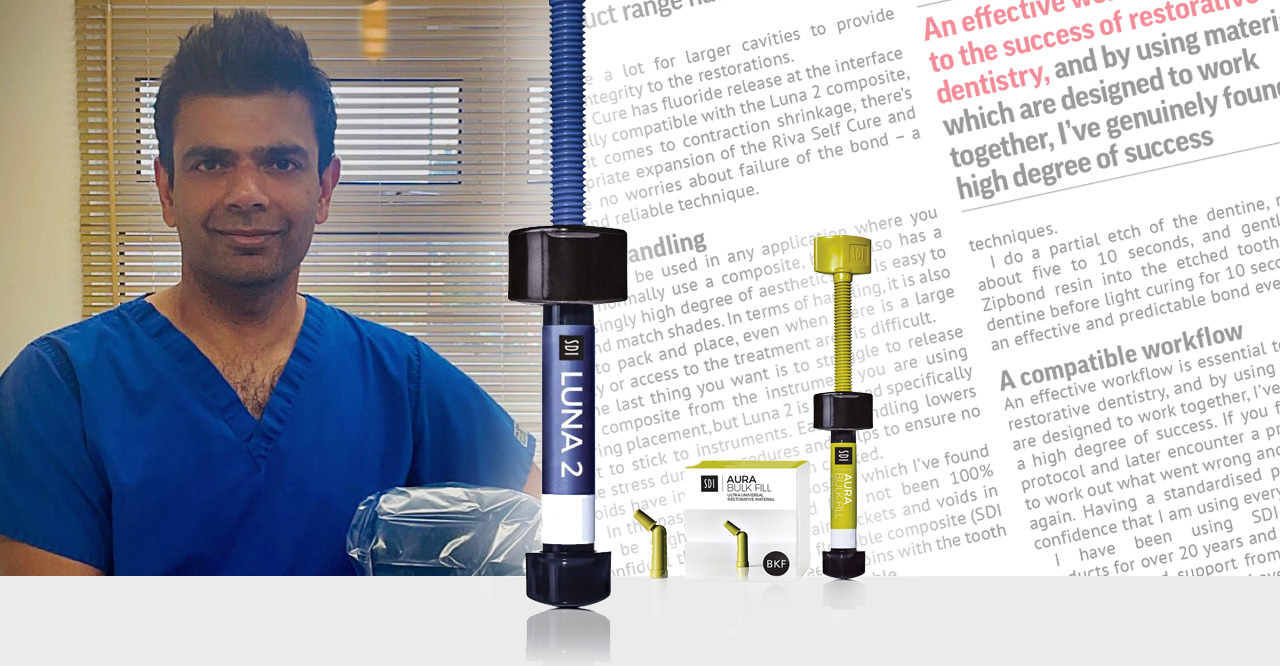Dr Jatinder Heer explains why using the SDI product range has been a dream come true for restorative cases
Finding a universal composite that works equally well in anterior and posterior cases sounds too good to be true for many restorative dentists. While universal composites in general offer similar characteristics, they are certainly not all the same and it’s important to find the one that works well in your hands.
As a restorative dentist, essentially, the primary properties I look for in a universal composite are durability and strength. Having polishability and aesthetics for the anterior region is also important, but for posterior restorations, I believe the compressive strength is a critical component.
I’ve been using SDI Luna 2 almost exclusively now for two years for my restorative cases. It handles exceptionally well for anterior and posterior teeth and in the posterior region, I’ve had no failures due to compression in load-bearing areas. It’s a genuine all-in-one composite and for general dentists, I believe this is a major advantage, especially when the composite is placed with SDI Riva Self Cure, which I use a lot for larger cavities to provide structural integrity to the restorations.
Riva Self Cure has fluoride release at the interface and is totally compatible with the Luna 2 composite, so when it comes to contraction shrinkage, there’s an appropriate expansion of the Riva Self Cure and there are no worries about failure of the bond – a simple and reliable technique.
Ease of handling
Luna 2 can be used in any application where you would normally use a composite, but it also has a surprisingly high degree of aesthetics and is easy to mix and match shades. In terms of handling, it is also easy to pack and place, even when there is a large cavity or access to the treatment area is difficult.
The last thing you want is to struggle to release the composite from the instrument you are using during placement, but Luna 2 is designed specifically not to stick to instruments. Easier handling lowers the stress during procedures and helps to ensure no voids have inadvertently been created.
In the past, I’ve used composites which I’ve found to be slightly crumbly and I’ve not been 100% confident that there aren’t air pockets and voids in there. In some cases, I use a flowable composite (SDI Luna Flow) just to guarantee the joins with the tooth surface interface are actually reliable.
Single layer bulk fill
When it comes to bulk fill composites for posterior restorations, and as we move away from amalgam, again the properties I’m looking for are strength and long-term durability. SDI Aura Bulk Fill is a single shade posterior nanohybrid composite with the optimal physical properties required for a posterior composite.
As every dentist knows, there are always difficult parts of larger restorations where you worry if you’ve got the necessary depth of cure needed at the base – for example, with a distal box of an upper molar. Because Aura Bulk Fill has a 5mm depth of cure, it gives you confidence knowing there will be no part of the composite that is not cured correctly, which for me is a critically important characteristic.
Reduce pulpal irritation
I’m keen on the sandwich technique for durable and aesthetic restorations using Riva HV to replace the dentine and either Luna 2 or Aura Bulk Fill over the top to replace the enamel.
For larger restorations which are close to the pulp chamber, I’m increasingly using an extra layer of SDI Riva Star, which contains silver diamine fluoride to prevent the likelihood of pulpal irritation. I find this is a really quick, easy and effective step which just adds to my confidence that I’ve done everything possible to prevent any problems further down the line.
Predictable bond strength
Without a reliable bond between the tooth surface and the restoration, that restoration will almost certainly fail – it will either de-bond or you’ll get recurrent caries. SDI Zipbond Universal achieves successful bond strengths across dentine and enamel using self-etch, selective etch and total etch techniques.
I do a partial etch of the dentine, normally for about five to 10 seconds, and gently scrub the Zipbond resin into the etched tooth surface and dentine before light curing for 10 seconds, ensuring an effective and predictable bond every time.
A compatible workflow
An effective workflow is essential to the success of restorative dentistry, and by using materials which are designed to work together, I’ve genuinely found a high degree of success. If you follow the correct protocol and later encounter a problem, it is easier to work out what went wrong and stop it happening again. Having a standardised procedure gives me confidence that I am using everything correctly.
I have been using SDI products for over 20 years and the service and support from SDI is second to none. I have seen their materials evolve over the years and they have genuinely just got better and better. They listen to feedback from clinicians and if an improvement is scientifically possible, they will take it on board. I think as dental material scientists, they do an amazing job.

About the author
Dr Jatinder Heer BDS Lond, MFGDP(UK), has been working as a general practitioner for twenty-five years, with a career that’s also spanned hospital environments. After setting up the JH Dental Clinic in 2001 he’s been involved in both general dentistry and acts as a referral centre for more complex cases. Dr Heer is an advocate for advancements in dentistry that are backed up by robust clinical research.





